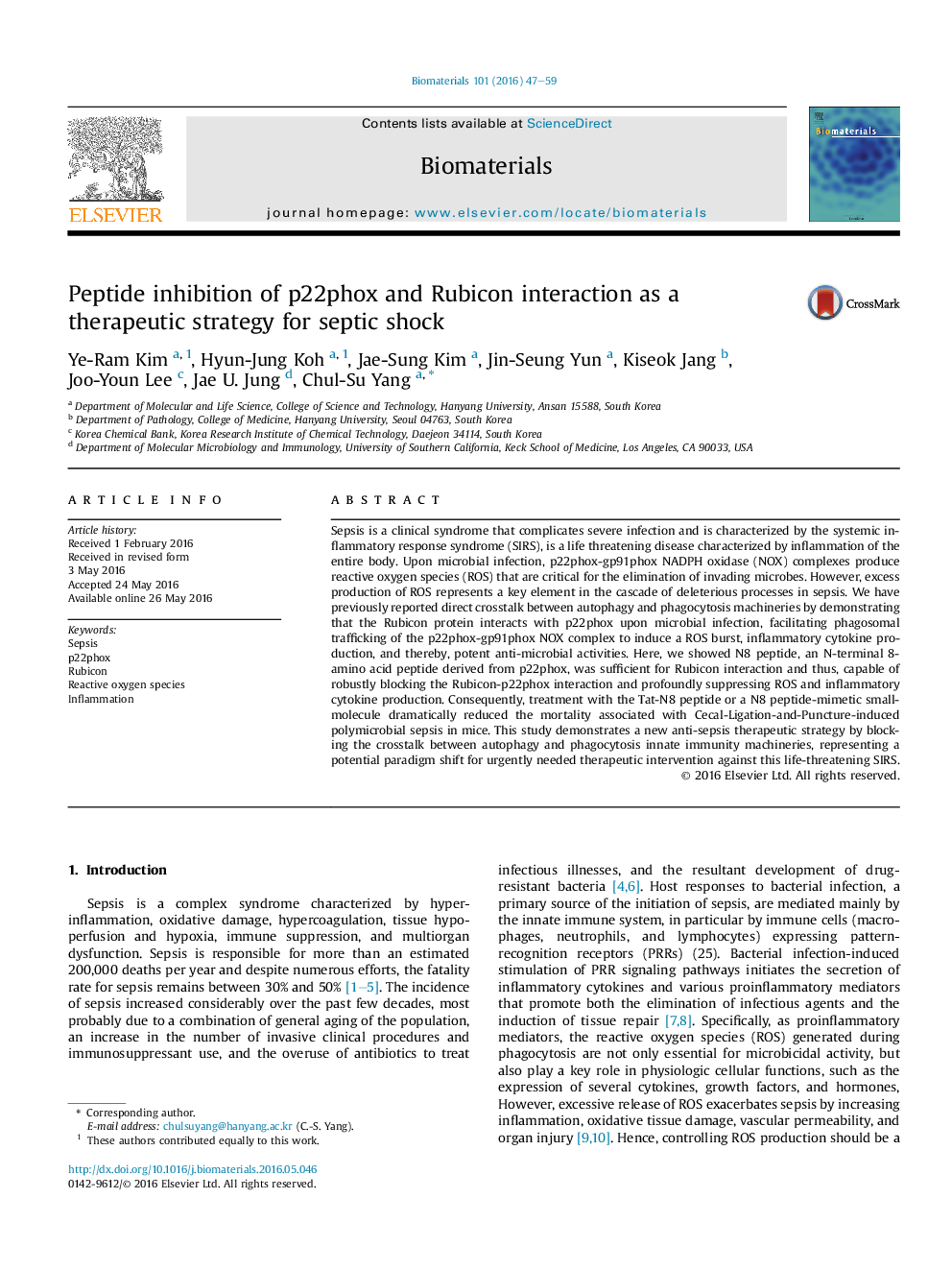| کد مقاله | کد نشریه | سال انتشار | مقاله انگلیسی | نسخه تمام متن |
|---|---|---|---|---|
| 5331 | 367 | 2016 | 13 صفحه PDF | دانلود رایگان |

Sepsis is a clinical syndrome that complicates severe infection and is characterized by the systemic inflammatory response syndrome (SIRS), is a life threatening disease characterized by inflammation of the entire body. Upon microbial infection, p22phox-gp91phox NADPH oxidase (NOX) complexes produce reactive oxygen species (ROS) that are critical for the elimination of invading microbes. However, excess production of ROS represents a key element in the cascade of deleterious processes in sepsis. We have previously reported direct crosstalk between autophagy and phagocytosis machineries by demonstrating that the Rubicon protein interacts with p22phox upon microbial infection, facilitating phagosomal trafficking of the p22phox-gp91phox NOX complex to induce a ROS burst, inflammatory cytokine production, and thereby, potent anti-microbial activities. Here, we showed N8 peptide, an N-terminal 8-amino acid peptide derived from p22phox, was sufficient for Rubicon interaction and thus, capable of robustly blocking the Rubicon-p22phox interaction and profoundly suppressing ROS and inflammatory cytokine production. Consequently, treatment with the Tat-N8 peptide or a N8 peptide-mimetic small-molecule dramatically reduced the mortality associated with Cecal-Ligation-and-Puncture-induced polymicrobial sepsis in mice. This study demonstrates a new anti-sepsis therapeutic strategy by blocking the crosstalk between autophagy and phagocytosis innate immunity machineries, representing a potential paradigm shift for urgently needed therapeutic intervention against this life-threatening SIRS.
Journal: Biomaterials - Volume 101, September 2016, Pages 47–59